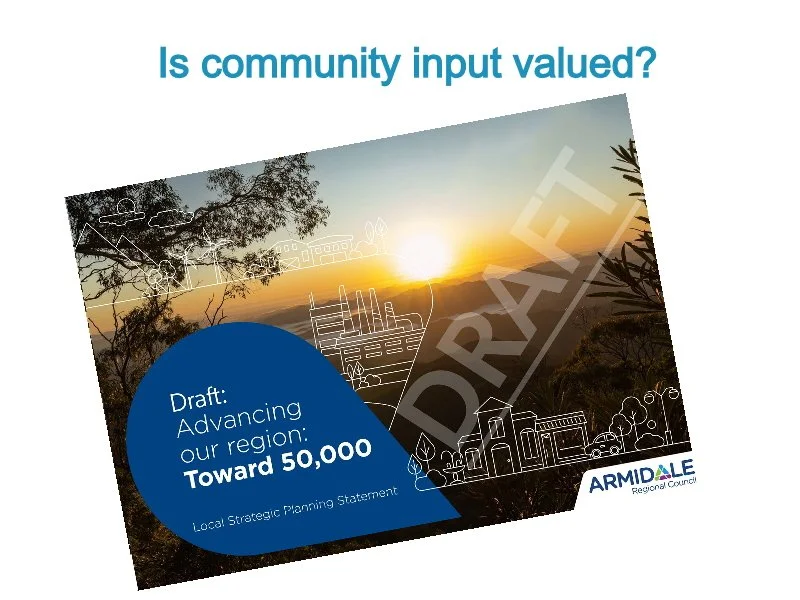In March 2024, our association provided detailed comments to Armidale Regional Council on its draft LSPS (Local Strategic Planning Statement) which is boldly titled “Toward 50,000”. Although our association’s prime focus is on improving water in our creeklands, our members wanted to provide some community input on the many issues raised in this ambitious plan.
As we wrote to Council at the time “ we are pleased that ARC have taken on this task in such a bold fashion with a detailed and broad approach to growing our region”.
To date, we have not had any response to our submission and we wonder, is input from the community really valued by our Council? We certainly hope so! After all, we reckon not many folks would have read the 96 page draft plan and even fewer would have offered detailed comments on it.
You can read below a few of the points we made in our 13 page submission. For those interested, you can read our entire submission here.
“We continue to hope that one day, Armidale Regional Council will realise that improving the creeklands precinct with more healthy flowing water is the key to improving so much about our city, its beauty and its attractiveness to visitors and residents”
“Much more could be said of the arts, our very special NERAM and ACCKP and especially of our music talents and NECOM”
“… we question the decision to base the plan on growing just 3 industry sectors …”
“… we believe that much more can be said about our wonderful education and agricultural sectors as well as our performing and creative arts sectors”
“A healthy vibrant creeklands should improve environmental outcomes but also be a driver for tourism as well as an asset for improved community health and wellbeing”.
“… this plan should mention the vital importance of returning environmental water to allow our drain to become a healthy, beautiful stream with accompanying billabongs, pools and constructed wetlands”.
“We agree that (water security) is the number one priority for our region. We add that environmental water should also be a focus so we can keep our main artery along our creeklands healthy and beautiful even during dry times”.
“Any university needs to be a healthy community of scholars who meet and talk with each other, preferably via face-to-face interactions. Young learners need the experiences of personal contact, sporting and extra-curricular activities to provide a well-rounded educational experience as well as to make life-long friendships at this crucial stage of life. UNE and ARC should work together to recreate a learning environment like this, enhanced by digital features.”
“Adding a nature play area to Curtis Park would … make a lot of sense for attracting more visitor and resident interest in the heart of our creeklands precinct”.
If any in the community wish to comment on the points made in this blog, please enter your comment in the box below …










